Lightning Damage to Landscape Palms1
Florida is considered the lightning capital of the world. Its proximity between the Gulf of Mexico and the Atlantic Ocean generates heated moisture to make it a breeding ground for thunderstorms and lightning. During the summer, sea breeze fronts are a major contributor to afternoon thunderstorms. In fall through spring, northern cold fronts can trigger occasional rounds of thunderstorms. According to AccuWeather, Florida has on average 3,500 cloud-to-ground lightning strikes per day and 1.2 million strikes per year. In south Florida, the lightning season is generally from mid-June through September. Based on the average numbers of thunderstorm days per year, nine of the ten top lightning-prone cities in the United States are in Florida. Fort Myers ranks as the number-one lightning-prone city with 88.0 thunderstorm days per year, followed by Tampa (82.7), Tallahassee (82.5), Orlando (81.8), and West Palm Beach (76.8).
Some palm species are more susceptible to lightning strikes than other species; the reason is unknown. Generally, palms of great heights, those in the open or in small groups, and those in relatively good health are more prone to lightning strikes. Royal palms (Roystonea regia), coconut palms (Cocos nucifera) and Washington palms (Washingtonia robusta) are particularly vulnerable, but other tall palms may be equally susceptible.
Heat and Speed of Lightning
The most important effect of a lightning strike is the extreme heat, speed, and shock waves generated by the bolt. The electrical current of 35,000 amps produces temperatures in excess of 50,000°F in a millionth of a second and pressures of 50 atmospheres. The velocity is about 1/10 the speed of light, making the trip from cloud to ground, or around the plant and back to the cloud, in about 100 millionths of a second. A direct lightning strike on a palm is usually fatal.
Learning to distinguish the symptoms of lightning strikes is a valuable tool for arborists, landscapers, pest control companies, and gardeners. The symptoms may be confused with other causes such as lethal yellowing disease (Candidatus palmae Phytoplasma), Thielaviopsis trunk rot (Thielaviopsis paradoxa), palmetto weevil (Rhynchophorus cruentatus), and even storm damage. Lightning injury symptoms are variable and could include the following:
Symptom onset occurs within days of a recent thunderstorm.
A sudden collapse of the crown occurs, usually beginning with the older, lower fronds (Figures 1–4).
The collapsed fronds are at first green but become brown and necrotic within days or in two to three weeks after the strike (Figure 5).
The crownshaft of royal palms is sometimes broken and collapsed at its base (Figure 6).
An upper hollowed trunk sometimes occurs (Figure 7).
The hollowed trunk may at first be filled with slush from the overheated shattered tissue (Figure 8).
The slush is odorless during the first few days of the injury and perhaps weeks thereafter.
A longitudinal gash may occur on the trunk (Figures 9–10) and perhaps also on the crownshaft.
Numerous shot holes might appear in the trunk.
Bleeding, otherwise known as sap flow, may occur from the trunk (Figures 11–12).
Mature and immature nuts fall from the palm days after a lightning strike (Figure 13).
The crown eventually falls from the trunk (Figure 14). However, the crown often detaches for other reasons.
Injury or death to adjacent understory plants is sometimes present (Figure 15).
Several palms can be killed by a single strike if they are in close proximity. The lightning can disperse from one palm to others nearby. When this occurs, it is possible that palms directly hit will die very quickly, along with nearby vegetation, whereas those palms hit indirectly are more likely to linger for months (Figure 16).
Loose soil is sometimes found around the base of the palm.
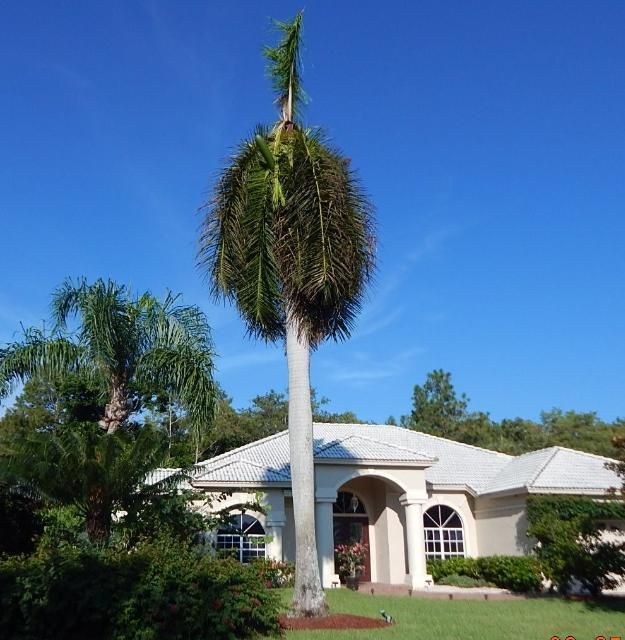
Credit: Douglas Caldwell, UF/IFAS

Credit: Stephen H. Brown, UF/IFAS
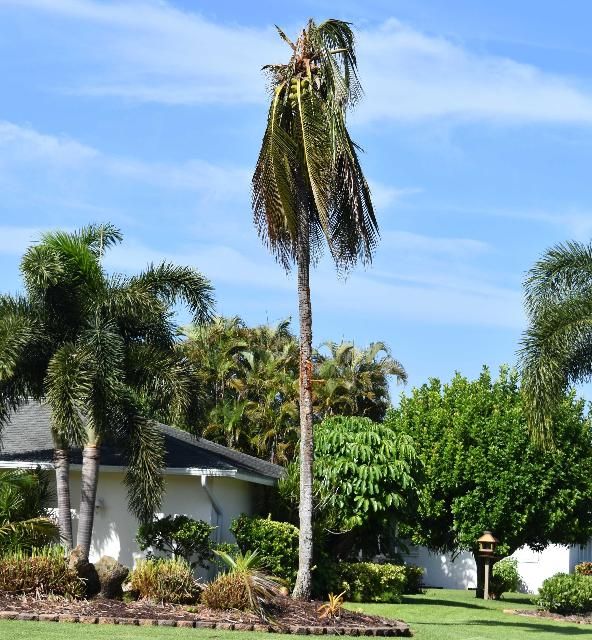
Credit: Stephen H. Brown, UF/IFAS
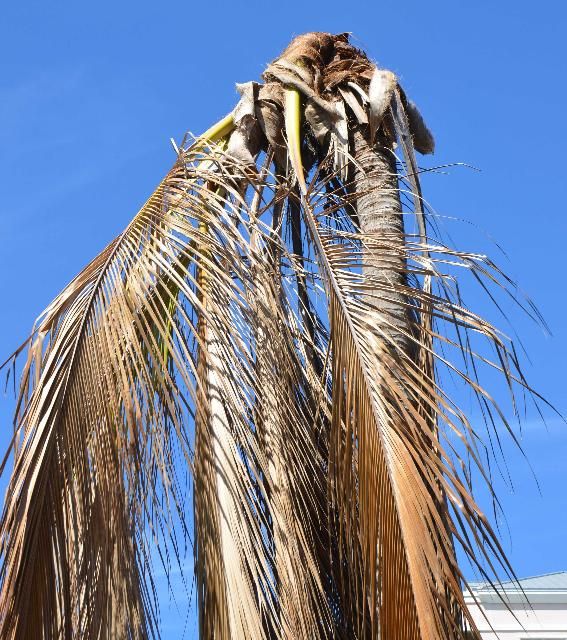
Credit: Stephen H. Brown, UF/IFAS
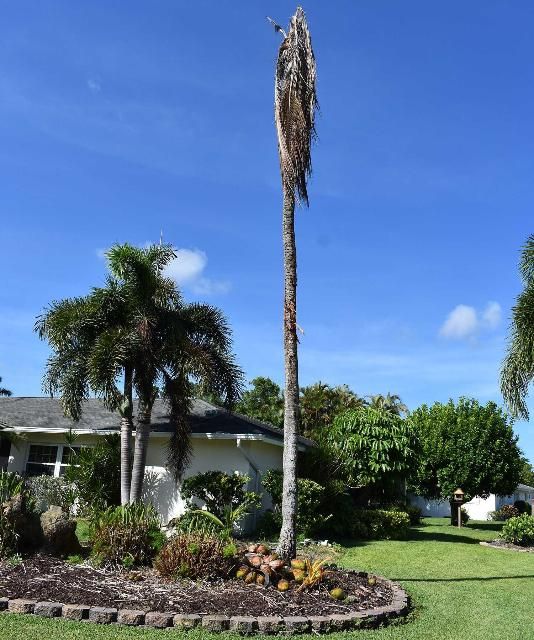
Credit: Stephen H. Brown, UF/IFAS
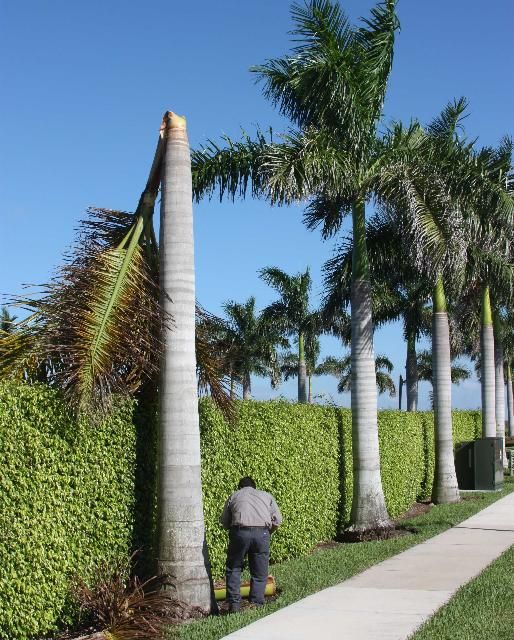
Credit: Stephen H. Brown, UF/IFAS
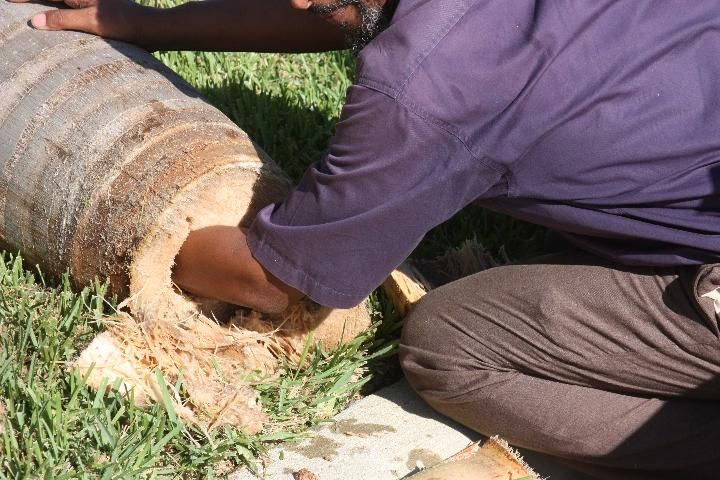
Credit: Stephen H. Brown, UF/IFAS
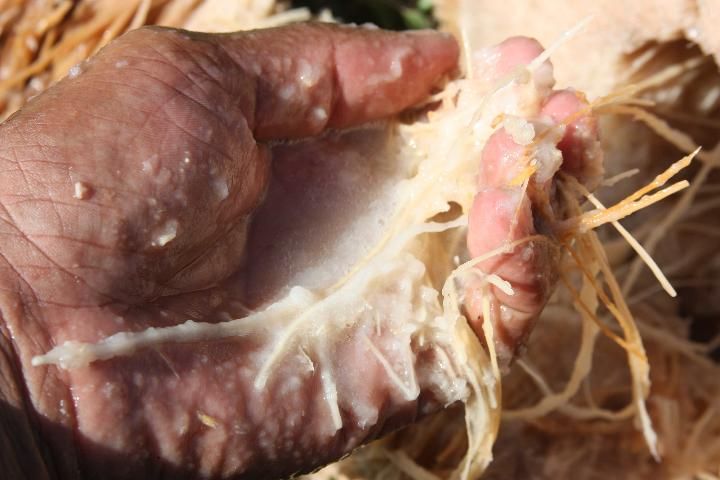
Credit: Stephen H. Brown, UF/IFAS
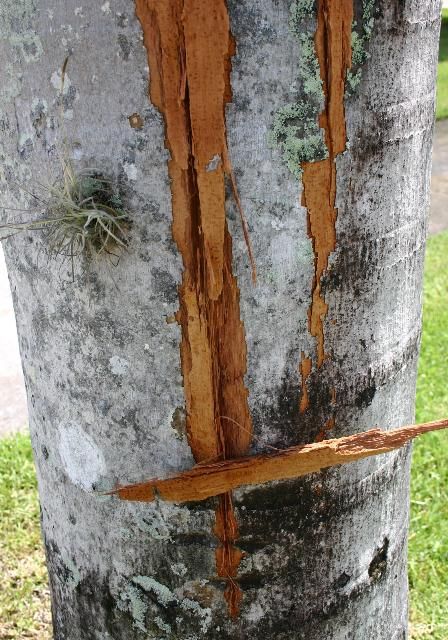
Credit: Stephen H. Brown, UF/IFAS
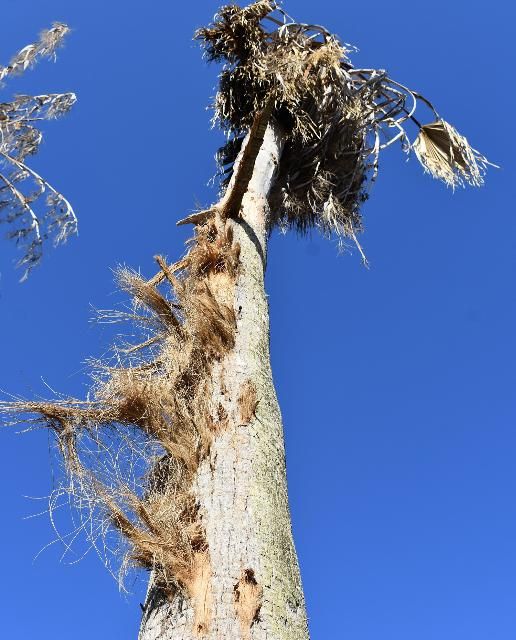
Credit: Stephen H. Brown, UF/IFAS
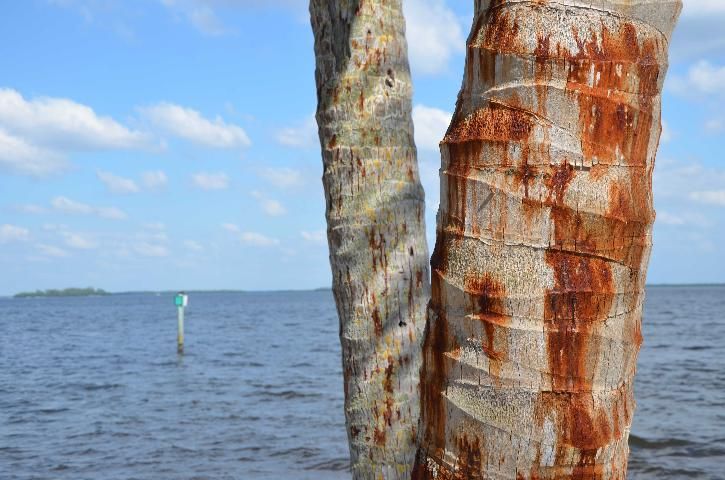
Credit: Stephen H. Brown, UF/IFAS
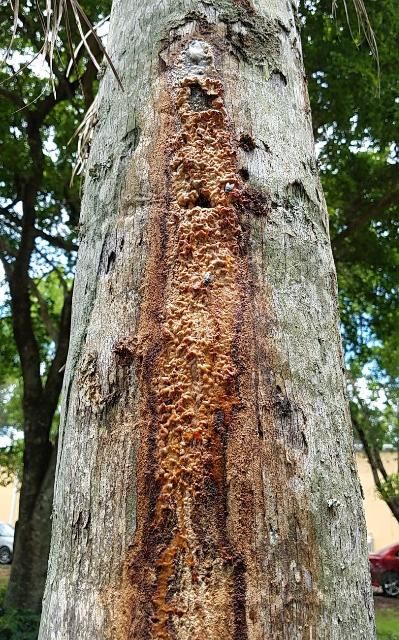
Credit: Stephen H. Brown, UF/IFAS
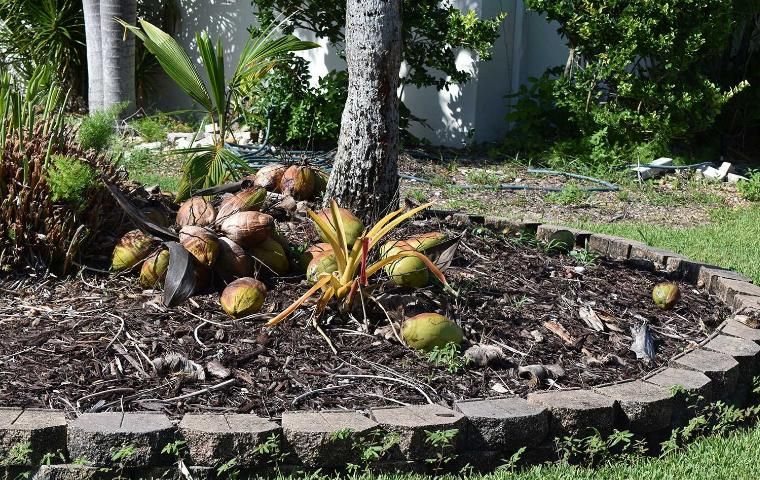
Credit: Stephen H. Brown, UF/IFAS
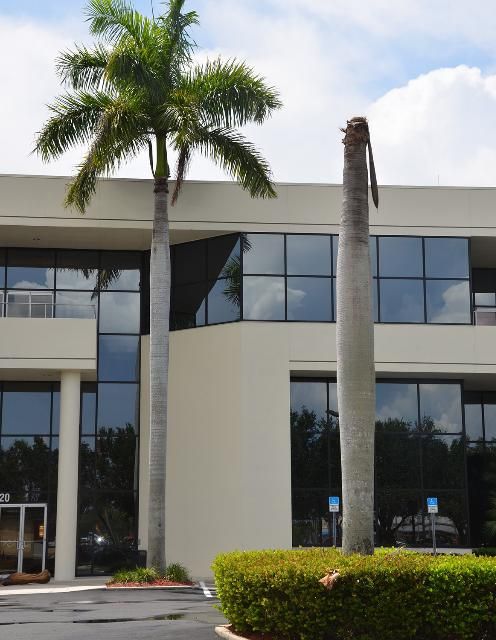
Credit: Stephen H. Brown, UF/IFAS
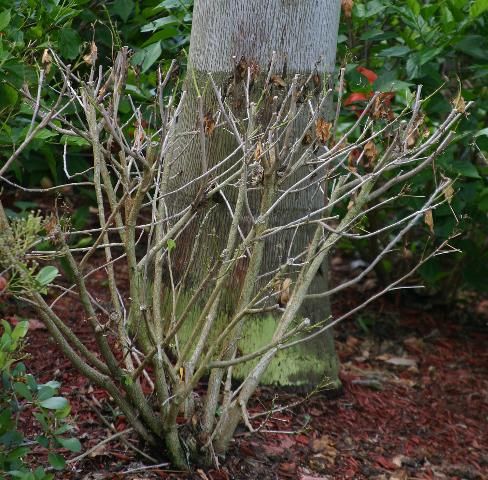
Credit: Stephen H. Brown, UF/IFAS
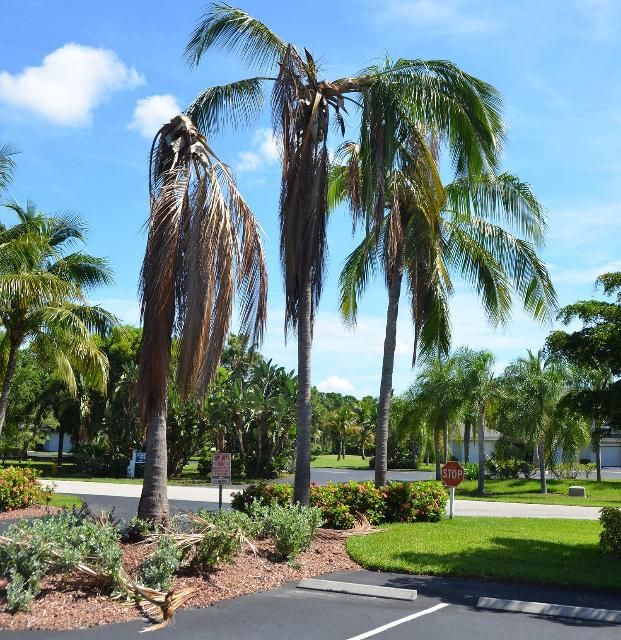
Credit: Stephen H. Brown, UF/IFAS
Lightning Protection Systems
Most homeowners will probably not be able to afford the cost and maintenance of a lightning protection system. However, in public or common spaces and with palms of high landscape value or visibility, a lightning protection system may be warranted. Lightning protection systems do not dissipate the electrical charge when struck. Instead they are intended to provide a preferred, nondamaging path to the ground for a lightning strike.
The system should be installed by an experienced certified arborist and may last for up to 50 years if properly maintained. As the palm grows, its canopy will begin to obscure the conductor, making the system less effective. To avoid this, periodic adjustments of the rod to keep it above the canopy of growing palms may be necessary (Figures 17–18). The palm should be inspected annually on younger, fast-growing palms and every two to three years on older, slower-growing palms. It is the responsibility of the palm's owner to schedule the inspections.
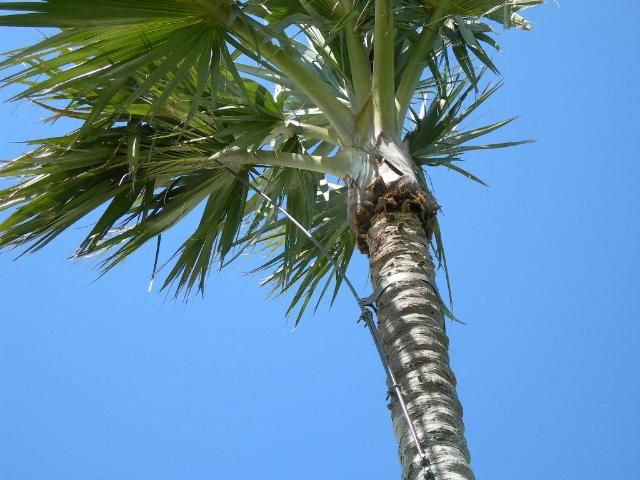
Credit: A. D. Ali, The Davey Tree Expert Co.
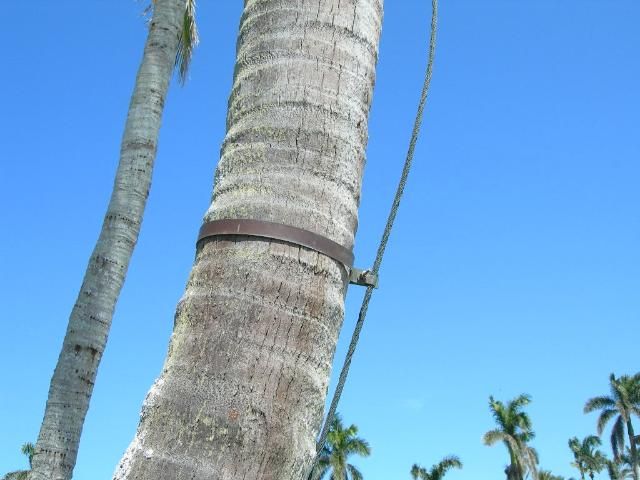
Credit: A. D. Ali, The Davey Tree Expert Co.
Although some palms may survive six months or longer following a strike, lightning strikes are usually fatal to palms, and injuries cannot be treated. Palms with leaves that are collapsed against the trunk (Figures 1 and 3) or with broken crownshafts (Figure 6) can be removed even when leaves are green.
"Snags"
Dead palms can be a scarce resource for wildlife habitat in many urban areas. A dead palm can remain standing for years without any fronds. If it is not a danger to pedestrians or structures, it could conceivably serve as a "snag" to attract wildlife (Figure 19). It is an ideal nest site for woodpeckers and other cavity-nesting birds that cannot excavate their own nesting cavities. However, dead palms also serve as a magnet for Ganoderma butt rot (Ganoderma zonatum) to become established in the landscape, and that is a good reason to remove the dead palm trunks and stumps. The stump should be ground up to prevent it from becoming a food source for the fungus that causes Ganoderma butt rot.
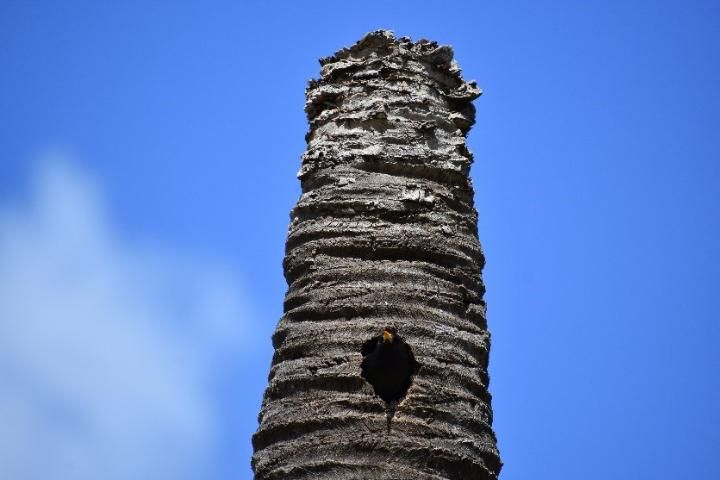
Credit: Stephen H. Brown, UF/IFAS
References
Broschat, T. K. 2014. Physiological Disorders of Landscape Palms. ENH1011. Gainesville: University of Florida Institute of Food and Agricultural Sciences. https://edis.ifas.ufl.edu/ep263
Clatterbuck, W. K., D. S. Vandergriff, and K. D. Coder. "Understanding Lightning & Associated Tree Damage." College Station, TX: Texas A&M AgriLife Extension. https://agrilife.org/treecarekit/after-the-storm/understanding-lightning-associated-tree-damage/
Donegan, B. 2016. "The Most Lightning-Prone Cities in the U.S." https://weather.com/science/weather-explainers/news/cities-most-prone-to-lightning
Nelson, S. C. 2008. Lightning Injury to Plants. PD-40. Manoa, Hawaii: University of Hawaii Cooperative Extension Service. https://www.ctahr.hawaii.edu/oc/freepubs/pdf/PD-40.pdf
Smiley, E. T. n.d. "Lightning Protection for Trees." Charlotte, NC: Bartlett Tree Research Laboratories. https://www.bartlett.com/resources/lightning-protection.pdf
Zona, S. 2008. "When Lightning Strikes." In Growing Palms: Horticultural and Practical Advice for the Enthusiast, edited by R. J. Moore. Palms 52 (2): 57–62. https://palms.org/wp-content/uploads/2016/05/v52n2p57-62.pdf



